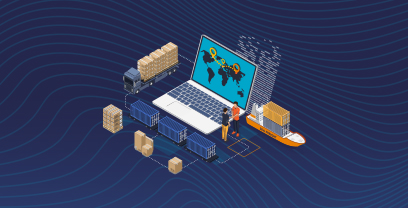|
The Forrester Wave™: Supplier Value Management Platforms, Q3 2024 See Report
Blog »
How Supply Base Segmentation can help you Manage Risk
di Vishal Patel
The New Importance of Risk Management
Managing Supply Risk has always been part of a buyer’s job, but it is becoming more and more important today. Indeed, many trends have increased the chances of Supply Risk occurring, such as Cost Reduction focus, Supplier consolidation, Reliance on the Internet, Just-in-time delivery practices, Centralization, and Outsourcing.
So with an ever-growing list of problems that will keep you up at night, how can you break this down and address these risks? You’re already familiar with supply base segmentation, which is defined by ISM as, “The strategic analysis of each supplier to determine the extent to which the supplier contributes to the core competence and competitive advantage of the buying organization.”
Make the most out of Supply Base Segmentation
Time and resources are limited, so you typically segment the supply base to pinpoint specific suppliers with whom you wish to focus time and resources. Segmentation for risk is just an extension of normal supply base segmentation, only you are looking specifically for suppliers who pose a potential risk to your firm or who are strategically important and you want to keep an eye on them. These are the suppliers of interest for risk, those on whom you want to focus for risk management. Ordinarily supplier segmentation begins by looking at those suppliers who represent the top 10-20% of spend. But don’t stop there. Just because you don’t spend a lot of money with a supplier doesn’t mean that they can’t bring down your supply chain with a risk incident. Identifying these single points of failure in terms of risk is important. Involve end users, as they can identify suppliers critical to risk management. As a result of SCRM segmentation, you can list of each supply chain risk categorized by criticality and prioritized by importance to address. Then you can identify the suppliers whom you want to watch carefully for risk.
Here are a few examples of the types of suppliers to consider during supply risk segmentation:
- Suppliers who have exhibited poor performance (even if not yet formally measured) such as late deliveries, poor customer responsiveness, and poor quality
- Suppliers located in politically or geographically unstable areas of the world or who demonstrate other potential risks
- Suppliers with whom improved communications would be mutually beneficial and provide potentially valuable information
- Suppliers who are currently working with your company collaboratively on product development or who pose a potential IP risk New suppliers in an important category who have not yet established a performance track record
- Business concentration or overdependence on either your company or another company. If the overdependence is on another customer, then the supplier may be less responsive to your firm. Overdependence on your firm can create risk should the supplier encounter financial or operational issues.
Segment by Types of Risk
Business Concentration
Sole Source – Single Source – Financial Health
Suppliers Representing top 10% of Spend
Customers
Adverse Impact on end users
End user complaints
Quality
Suppliers having Quality escapes
Customer Complaints
Supplier Performance
EHS
(environment, health,safety)
Dangerous Substances – Hazardous Chemicals
Known issues – Bad publicity
Country with poor enforcement of EHS
Ethical
Identified as Ethical Risk
Ethical issues have already been identified
Known or suspended violations of CSR (Corporate Social Responsibility) standards
Legal, Political
Intellectual Property
Compliance with Local and international Law
Political factors and Risk
If you want to learn more about Supply Base Segmentation or just other ways of Managing Risk, please Download our Free Guide on Supplier Risk

Vishal Patel
VP Product Marketing
Vishal has spent the last 15 years in various roles within the Procurement and Supply Chain technology market. As an industry analyst, he researched and advised organizations in various industries on best and innovative practices, digitization and optimization. He brings a thorough understanding of market trends and digital technologies that can help enterprises be more effective with their Procurement and Supply Chain strategies. He works to ensure that organizations are empowered with technology platforms that enable flexibility, innovation, and agility.
You can connect with Vishal on Linkedin


